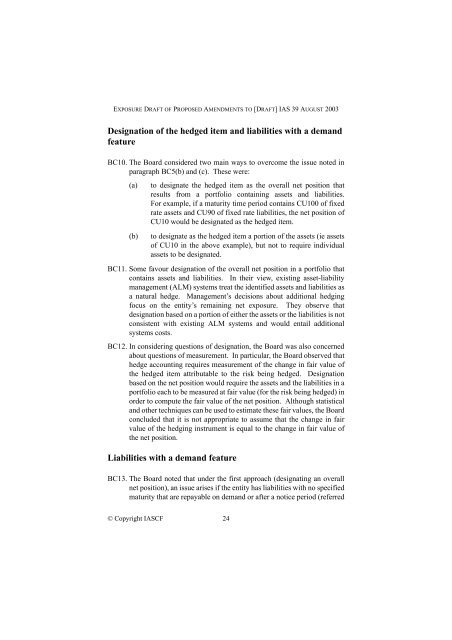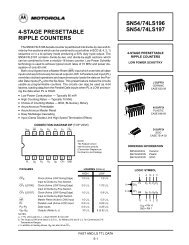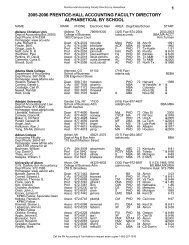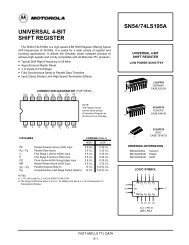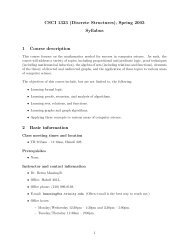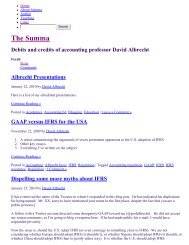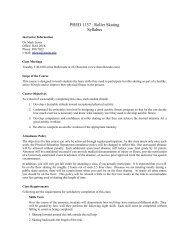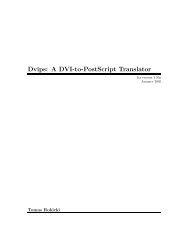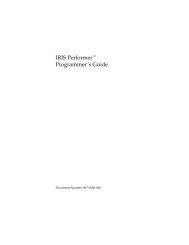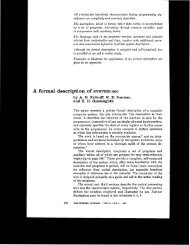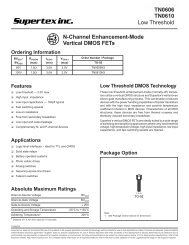fair value hedge accounting for a portfolio hedge of interest rate risk
fair value hedge accounting for a portfolio hedge of interest rate risk
fair value hedge accounting for a portfolio hedge of interest rate risk
You also want an ePaper? Increase the reach of your titles
YUMPU automatically turns print PDFs into web optimized ePapers that Google loves.
EXPOSURE DRAFT OF PROPOSED AMENDMENTS TO [DRAFT] IAS 39 AUGUST 2003<br />
Designation <strong>of</strong> the <strong>hedge</strong>d item and liabilities with a demand<br />
feature<br />
BC10. The Board considered two main ways to overcome the issue noted in<br />
paragraph BC5(b) and (c). These were:<br />
(a) to designate the <strong>hedge</strong>d item as the overall net position that<br />
results from a <strong>portfolio</strong> containing assets and liabilities.<br />
For example, if a maturity time period contains CU100 <strong>of</strong> fixed<br />
<strong>rate</strong> assets and CU90 <strong>of</strong> fixed <strong>rate</strong> liabilities, the net position <strong>of</strong><br />
CU10 would be designated as the <strong>hedge</strong>d item.<br />
(b)<br />
to designate as the <strong>hedge</strong>d item a portion <strong>of</strong> the assets (ie assets<br />
<strong>of</strong> CU10 in the above example), but not to require individual<br />
assets to be designated.<br />
BC11. Some favour designation <strong>of</strong> the overall net position in a <strong>portfolio</strong> that<br />
contains assets and liabilities. In their view, existing asset-liability<br />
management (ALM) systems treat the identified assets and liabilities as<br />
a natural <strong>hedge</strong>. Management’s decisions about additional hedging<br />
focus on the entity’s remaining net exposure. They observe that<br />
designation based on a portion <strong>of</strong> either the assets or the liabilities is not<br />
consistent with existing ALM systems and would entail additional<br />
systems costs.<br />
BC12. In considering questions <strong>of</strong> designation, the Board was also concerned<br />
about questions <strong>of</strong> measurement. In particular, the Board observed that<br />
<strong>hedge</strong> <strong>accounting</strong> requires measurement <strong>of</strong> the change in <strong>fair</strong> <strong>value</strong> <strong>of</strong><br />
the <strong>hedge</strong>d item attributable to the <strong>risk</strong> being <strong>hedge</strong>d. Designation<br />
based on the net position would require the assets and the liabilities in a<br />
<strong>portfolio</strong> each to be measured at <strong>fair</strong> <strong>value</strong> (<strong>for</strong> the <strong>risk</strong> being <strong>hedge</strong>d) in<br />
order to compute the <strong>fair</strong> <strong>value</strong> <strong>of</strong> the net position. Although statistical<br />
and other techniques can be used to estimate these <strong>fair</strong> <strong>value</strong>s, the Board<br />
concluded that it is not appropriate to assume that the change in <strong>fair</strong><br />
<strong>value</strong> <strong>of</strong> the hedging instrument is equal to the change in <strong>fair</strong> <strong>value</strong> <strong>of</strong><br />
the net position.<br />
Liabilities with a demand feature<br />
BC13. The Board noted that under the first approach (designating an overall<br />
net position), an issue arises if the entity has liabilities with no specified<br />
maturity that are repayable on demand or after a notice period (referred<br />
© Copyright IASCF 24


